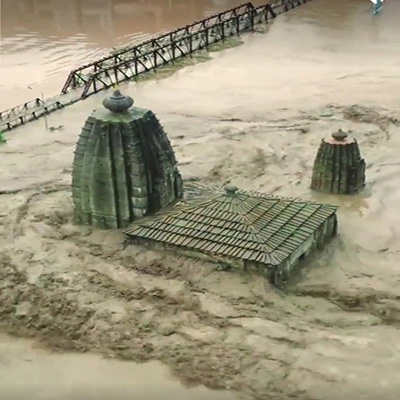Shimla- Himachal Pradesh has been ravaged by flash floods, leaving a trail of destruction mainly in the Mandi-Kullu Region. Notably ageold rock-cut Shikhar style, Panchvakhatr temple survives, while concreate monsters including Bridges, buildings and roads were swept away by the surging Beas river. Chief Minister Sukhvinder Singh Sukhu wasted no time in taking charge, conducting an urgent aerial survey to assess the extent of damages and deploy resources for immediate relief and rehabilitation efforts.
Noteworthy, in temple town of Mandi, Panchvakhtar temple, a protected monument of ASI, is dedicated to Lord Shiva portraying his five forms- Aghor, Ishan, Tat Purush,Vaamdev,Rudra.
Like the Lord Shiva Temple survived the Kedarnath Flash Flood more than 19 years ago, Panchvakhtar temple also survived the combined fury of the surging Beas and Suketi rivers which quietly submerged the temple.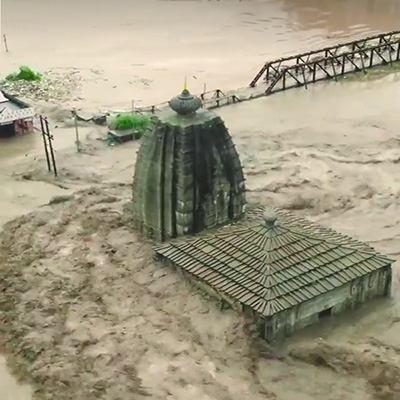
But the monument re-emerged likeable phoenix, with piles of sands in its Garabh Grih as soon as the Beas receded on July 10. Nobody knows who built Panchvakhtar, but it was restored during the reign of Raja Sidh Sen in 1684-1727.
Temple is built in Shikhar style and serves as a reminder to all the architects, engineers and technologists to take a clue or two to learn some lessons. 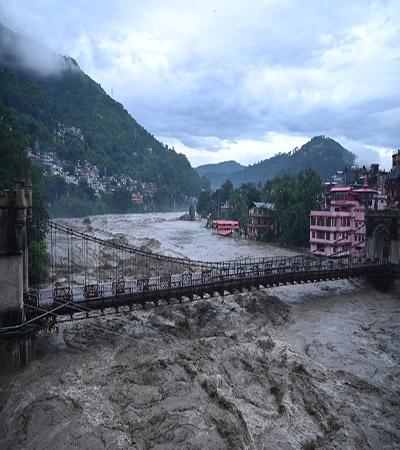
Another notable survivor is the British Built Victoria bridge. The surging Beas river flood level could not touch it as the then engineers have kept the highest flood level in mind when they built the bridge about over 90 years ago or so.
The floods have wreaked havoc iĺn Manali, Kullu, Bhuntar, Mandi, Aut, Larji, Thalot, parts of Shimla, Chamba, Kangra, Kinnaur, Solan and lowing lying area of Una, leaving residents and infrastructure in shambles.
CM visited Sainj, where 40 shops and 30 houses were washed away by the swollenSAinj river, ⁸ù,Bhuntar, Kasol,Gheer Ganga and other areas and shared the agony of the flood-hit people and had dinner with them in their shelter. Electricity has been restored in most areas of Kullu and Manali, he said. He also released Rs One Crore for immediate assistance to the affected people in Kullu. 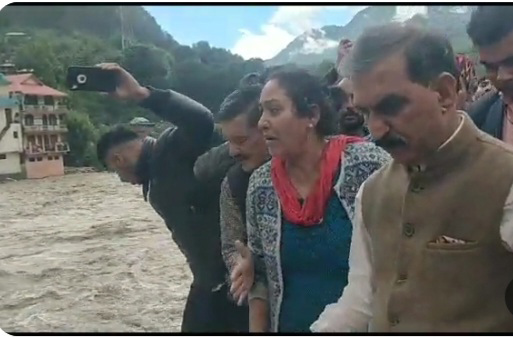
There is a need to declare Himachal as a disaster-prone state to rope in economic package from Centre for rebuilding its logistics to restore normalcy. 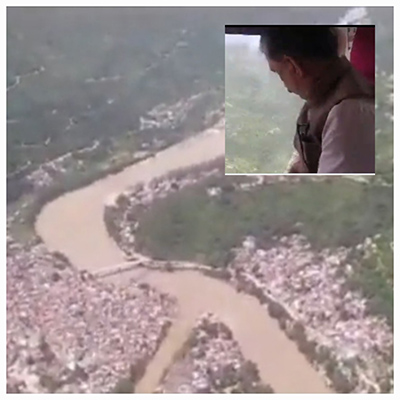
In Mandi, Kangra, Kullu, Chamba, Shimla, Solan and Sirmaur district, over 1200 roads and bridges, a lifeline for connectivity, about 3737 water schemes have been swept away by the raging torrents of the Beas, Satluj, Ravi and other rivers.
Chandigarh-Manali-Keylong- Leh Highway, a main lifeline, stands as a chilling testament to the immense force of nature, creating a logistical nightmare for travelers and locals alike.
Kalka-Solan-Shimla Fourlane Highway was also snapped at places due to the landslides and the falling boulders shooting down from the vulnerable hill sides cut by the NHAI and its contractors vertically posing dnager to the running traffic on the highway. 
The toll on the state's economy is staggering, with initial estimates placing the damages at a staggering Rs 4,000 crore.
Faced with the tough task of rebuilding and restoring the state, Himachal Pradesh government has reached out to Prime Minister Narendra Modi, seeking a generous economic package to alleviate the financial burden.
In a display of solidarity, government employees have expressed their willingness to contribute by donating one day's salary to expedite the recovery efforts, demonstrating a united front in the face of adversity. But Chief Minister has yet to take call on this.
The apple heartland of the state faces immediate crisis. Link roads, crucial for transportation during the impending apple season, have been severed, leaving farmers stranded and their produce at risk.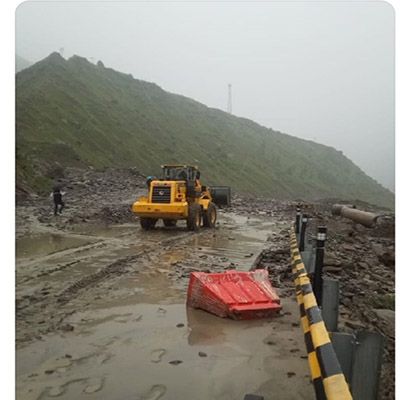
Immediate action is required to deploy machinery and restore these vital lifelines before irreparable damage is done to the apple belt.
The calamity has also exposed the shortcomings of the disaster management infrastructure in Himachal Pradesh. Most of the rescue operations are carried out by the NDRF and IAF anytime of eventuality.
The state disaster teams led by the heads are not only ill-equipped, but the officers except home guards are "suited and booted", but not in the protecting gears and fatigues as should be and is the case in many advanced countries.
Communication breakdowns and inadequate equipment have hampered rescue and relief operations, leaving affected areas isolated and vulnerable.
Authorities must invest in robust communication systems, including satellite phones, to ensure efficient coordination during emergencies.
To prevent future disasters, a comprehensive assessment of landslide-prone areas is urgently needed.
Mandi, Kullu, Shimla, Chamba, Lahaul-Spiti, and Kinnaur districts are characterized by their steep mountain slopes.
These must be thoroughly surveyed and fortified against future calamities.
Construction practices employed by agencies such as NHAI, PWD, BRO, and Jal Shakti and others must also be scrutinized.
These need to be aided by tech support from IITs to prevent compromises in quality and safety.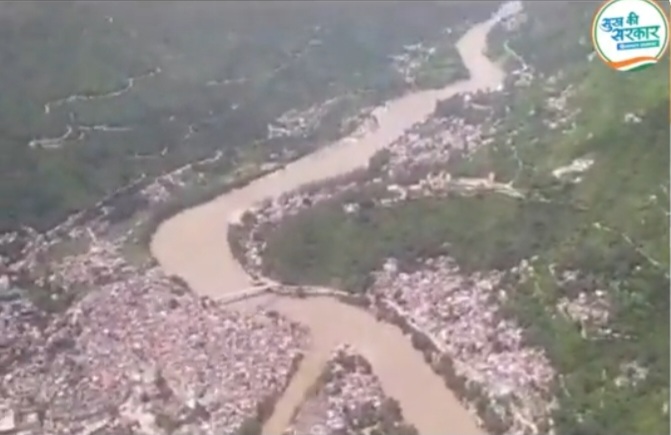
Furthermore, the authorities must address the environmental impact of excessive logging and construction or roads and houses, resorts along the river banks.
Areas like Thunag, Pulga, Manikaran,Bhuntar, Kullu, Mandi, Shimla and others in the Beas and Satluj valleys have witnessed deforestation, exacerbating the risk of flash floods.
The flash floods carried a huge load of logged and woods that testify all this.
Effective measures to control deforestation and ensure sustainable land management are essential to mitigate future disasters.
Settlements along the banks of rivers, including the Satluj, Beas, Tirthan, and Sainj, many other towns and settlements across the state require meticulous assessment and preparedness.
Their vulnerability to flash floods demands proactive measures to safeguard lives and properties.
Chief Minister, Sukhvinder Singh Sukhu, faces an uphill task ahead as the monsoon season continues to pose threats to the already battered infrastructure.
The state government is grappling with limited resources and the this calamity has pushed it on the backfoot.
Now on, it would need to shift its focus from developmental initiatives to arduous task of rebuilding and restoring the logistics and infrastructure that have been swept away by nature's fury.




